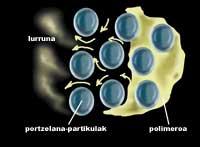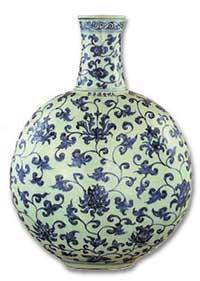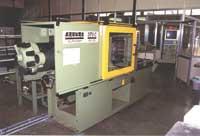Antique material, new mug
This framework is not completely new. In Germany they have worked mainly with recycled porcelain. However, there are many types of porcelain and it is necessary to investigate to design a process that suits each type; in Germany the recycling of Bone-China porcelain has been investigated and, in the same way, the technology center INASMET and the company Porcelanas Bidasoa have collaborated in the development of a process of recycling of hard porcelain.

As already indicated, it is a recycling focused on factories. Many of the pieces generated in them present defects that prevent their sale or use. On the other hand, it is sometimes convenient to reuse well made parts for various reasons. Recycling is an economically and environmentally interesting process.
However, it is only a laboratory project, in order to start the process it is necessary to test previously in pilot plant. In addition, there are some steps that make the whole process much more expensive, so efforts must still be made to improve it economically.
Crushing and gluing
The porcelain recycling process has only two steps. First, the old container or dish is completely broken until it is sprayed, then the collection and compaction of the powder obtained in the new desired form is proceeded.
But this methodology is complex from the beginning. According to the crushing method to recycle, different types of powder are obtained. The objective of this process is to obtain the appropriate granulometric properties, that is, to be able to control the size of dust particles, porosity, etc. In this case a wet method of crushing porcelain with aqueous solution has been used. The good quality powder obtained below is dried with sprays, so the material is ready to start forming the new piece.
But the second step of the process is also not easy, to give a new shape you have to inject it into a mold and then cohesion it. The crushed powder is not in a position to be used, since the injector only works with viscous fluids.
The team of engineers from Bidasoa, INASMET and Porcelanas proposed a polymer methodology that can serve as a binding substance. Polymers are synthetic compounds with very curious properties and their mixture with porcelain powder does not alter their properties. Depending on the synthesis method and what is added, certain viscosity polymers can be formed. This way you can pass the mixture through the injector to put it in a mold and form the part.
The INASMET project has used a commercial polymer called BAYCERAM, a multicomponent. On the one hand, it has polymer chains of high molecular weight that give it hardness; on the other, the compound that turns the mixture into surfactant (one of the stearic acids) and, finally, the wax so that it is not too viscous. Of course, all of them must be miscible.
The price of these substances is one of the keys to the cost of the process. Its high price means that you want to develop a procedure that requires the least amount possible. In addition to finding cheap components, research focuses on the size of dust particles. Experience has shown that it is best to obtain particles of different sizes. In this way the pores are created suitable for the removal of the polymer and, in addition, once finished, the minimum necessary consistency is obtained.

Injection and forming
The mixture is injected in four steps. First the polymer is mixed with porcelain. The new part is then machined into the mold and formed. The piece already has the right shape, but is made of a mixture. The polymer has fulfilled its function, so before continuing it is necessary to remove this polymer.
The third step is therefore the elimination of the binder. This step is critical because it takes a lot of time. The piece is heated and the components of this BAYCERAM begin to emerge from the pores of porcelain at a certain temperature. This is the advantage of using a multicomponent polymeric mixture. Finally the porcelain piece is compact. To do this, the piece is put into the oven and subjected to heat treatment, that is, the piece is sintered. The pores are closed and the vitrification process occurs, as in the production of traditional porcelains.
Beautiful mugs

In this way, the material has already acquired a form of "katilina" or "pitcher". Apparently these parts manufactured with the recycling process do not present significant differences with those manufactured with conventional methods. Therefore, the main objective has been fulfilled, since in addition to good appearance and softness, recycled porcelain is not required special mechanical characteristics.
Depending on the desired shape, the recycling process is increased or decreased. Geometrically more complex products are the most expensive, but recycling the simplest forms is usually more expensive than conventional methods, although the price does not depend solely on injection, since among all the components involved in the process BAYCERAM is the most expensive. Precisely, a line of research in this field aims to reduce this binding product. For this purpose, water based substances are being tested. The high proportion of water in these substances, around 90%, makes removing the polymer cheaper and faster. In fact, removing the polymer is the latest stage, so the duration of the entire recycling process depends on this step.
From land to kitchen
Ceramics
Mugs of clay were also made in ancient cultures. It was one of the first technologies developed by man. Wet clay can be easily shaped; if allowed to dry, cups endure this form. Moreover, when heated in the oven, the piece acquires a great hardness.

Porcelain
Chinese ceramics have had a great reputation from a certain time, as they developed a material that was not manufactured anywhere else: porcelain. To make a material that imitates Jade in the Han dynasty (a. C.) 206-C. 220) mixed quartz, feldspar and white clay called kaolin and got into the oven. The result was surprising, but it took centuries until they could make a real porcelain.
By the time of the Tang dynasty (618-907) the furnaces were well developed that could control the rate of temperature rise. In addition, the components of porcelain could be obtained at this time with great purity. Therefore, what was done then has been considered as the first porcelain in history. Since then, the best porcelain has been developed for centuries in China.
The most famous ceramic
Porcelain is a white, translucent ceramic. According to its composition there are many types, but it has three basic components: quartz, clay and feldspar. Quartz gives it a simpler vitrification capacity; the kaolin is a clay that ink white and the feldspar is the one that makes this mixture fluid. However, many other products are added to modern porcelain depending on their function.

The porcelain used in hospitality and the one sold for households do not always have the same composition. In most bars or restaurants, being in the hands of many people, the greatest possible mechanical resistance is sought. They are usually thicker and heavier pieces than those in households. To achieve this it is played not only with the size, but also with the composition of the material. For example, this porcelain can replace quartz with alumina in the initial mixture, a more expensive component, but which is usually the hardest final piece.
In general, porcelain is made in the oven following two steps with the initial mixture. The first is a warming at not very high temperatures (800-1000 ºC). Then the piece is hardened (can be painted, for example), but the material is porous and light. This type of material is called sponge cake. For a second heating at 1,400 °C the cake is compacted and the whole piece is vitrified, that is, the porcelain is formed.
Getting a proper binding substance is not easy. During the injection, this and the porcelain should be well mixed. Otherwise, there may be a risk of splitting into two phases. Three consequences occur when this occurs. On the one hand, the powder as abrasive can damage the injector, on the other, it can affect the viscosity of the mixture and finally, accumulate the powder at the inlet of the injector preventing the injection. Low viscosity is sought. This involves hot injection. However, excessive temperature rise can cause polymer degradation. Moreover, the injection speed also influences the viscosity of the mixture and ultimately the efficiency of the process. The control of all these variables has required numerous studies. This is because the injection is done without generating bubbles in the target, easily removing the polymer and, at the same time, taking into account the duration of the mold for many injections. |





